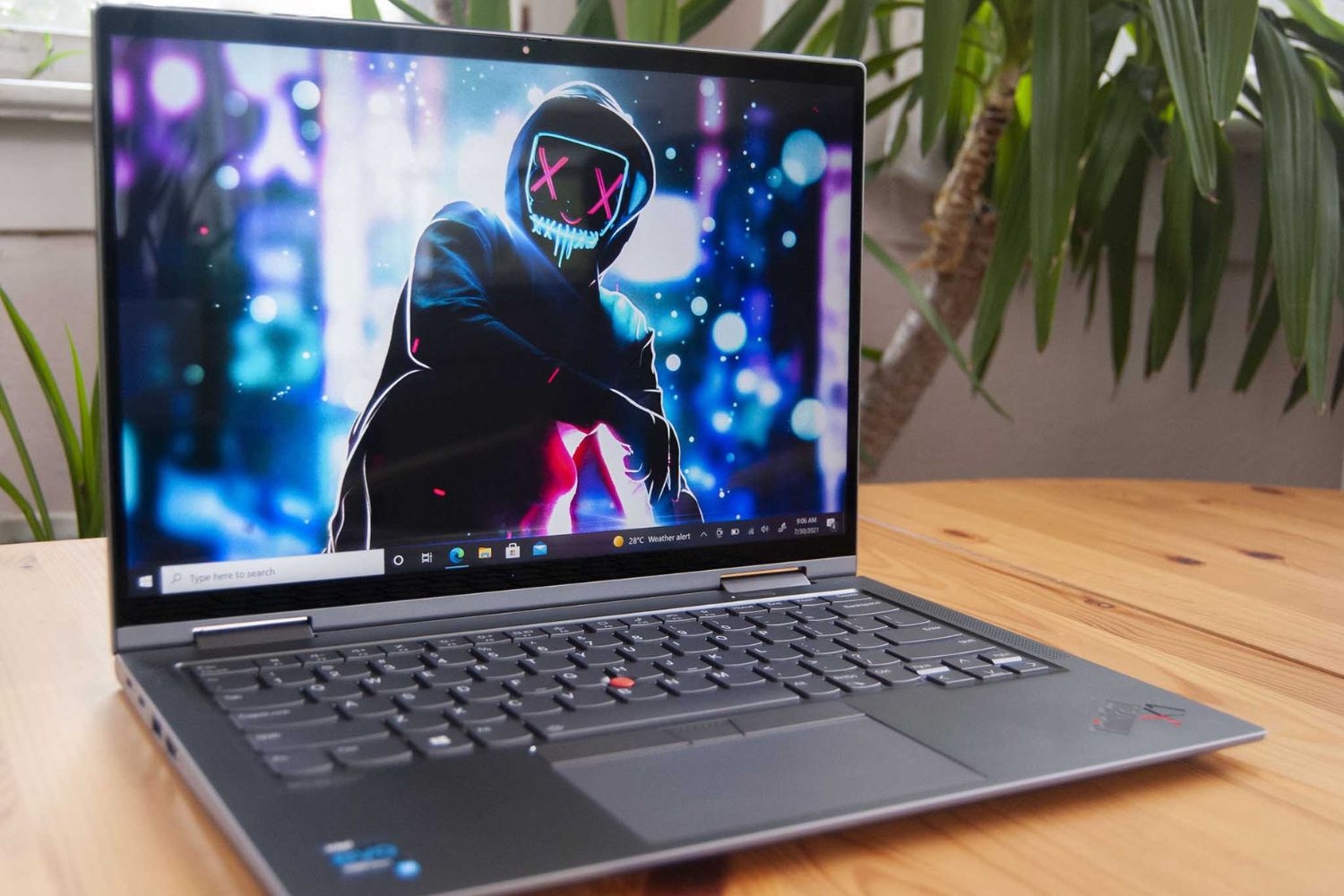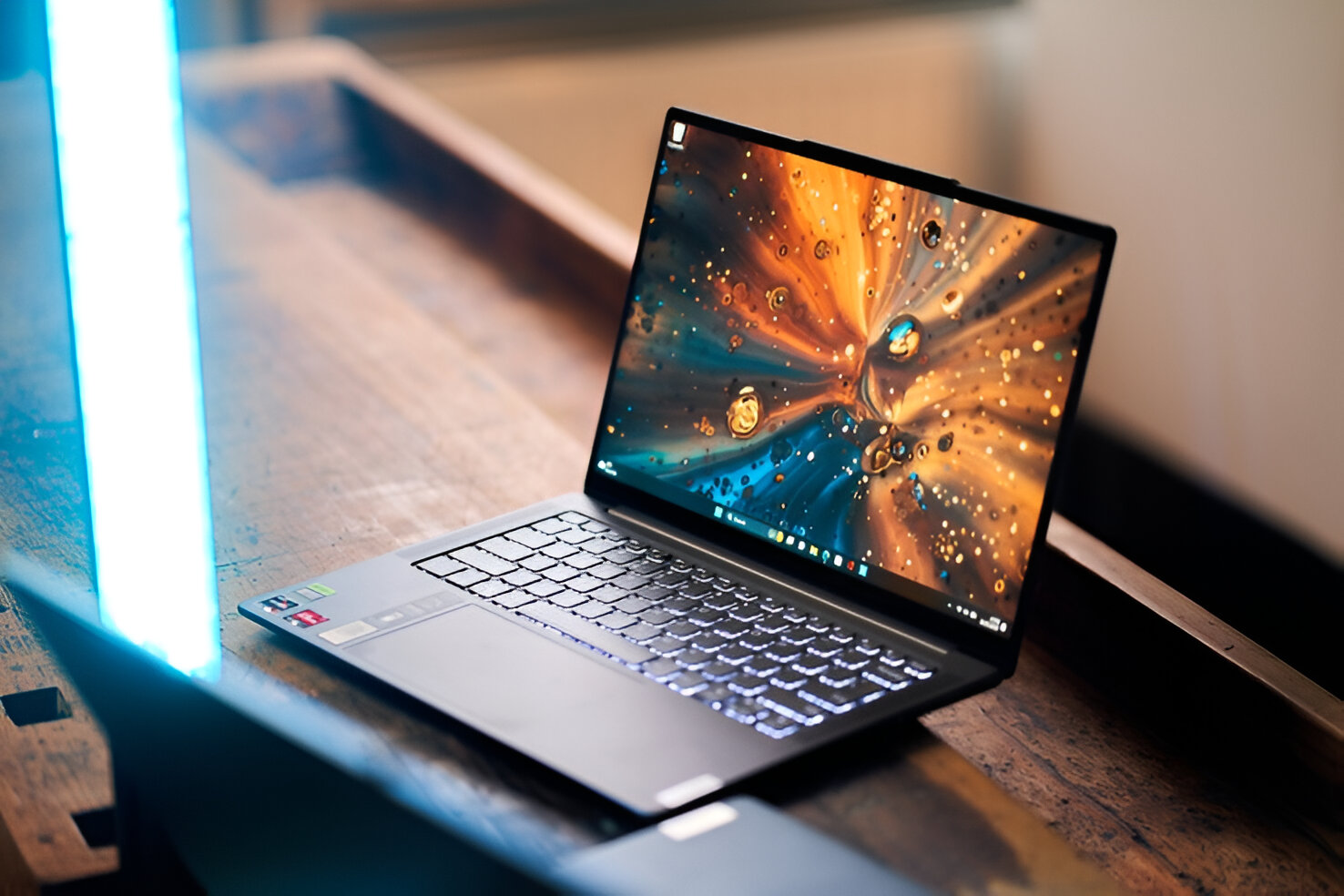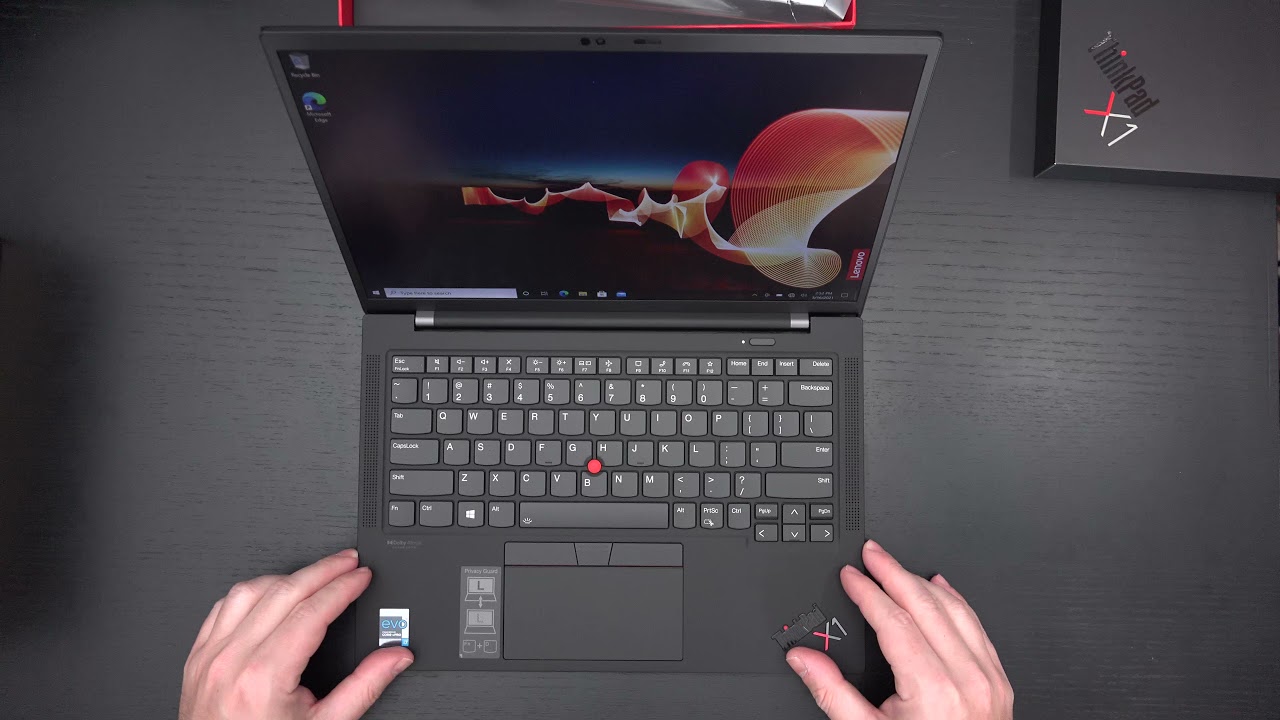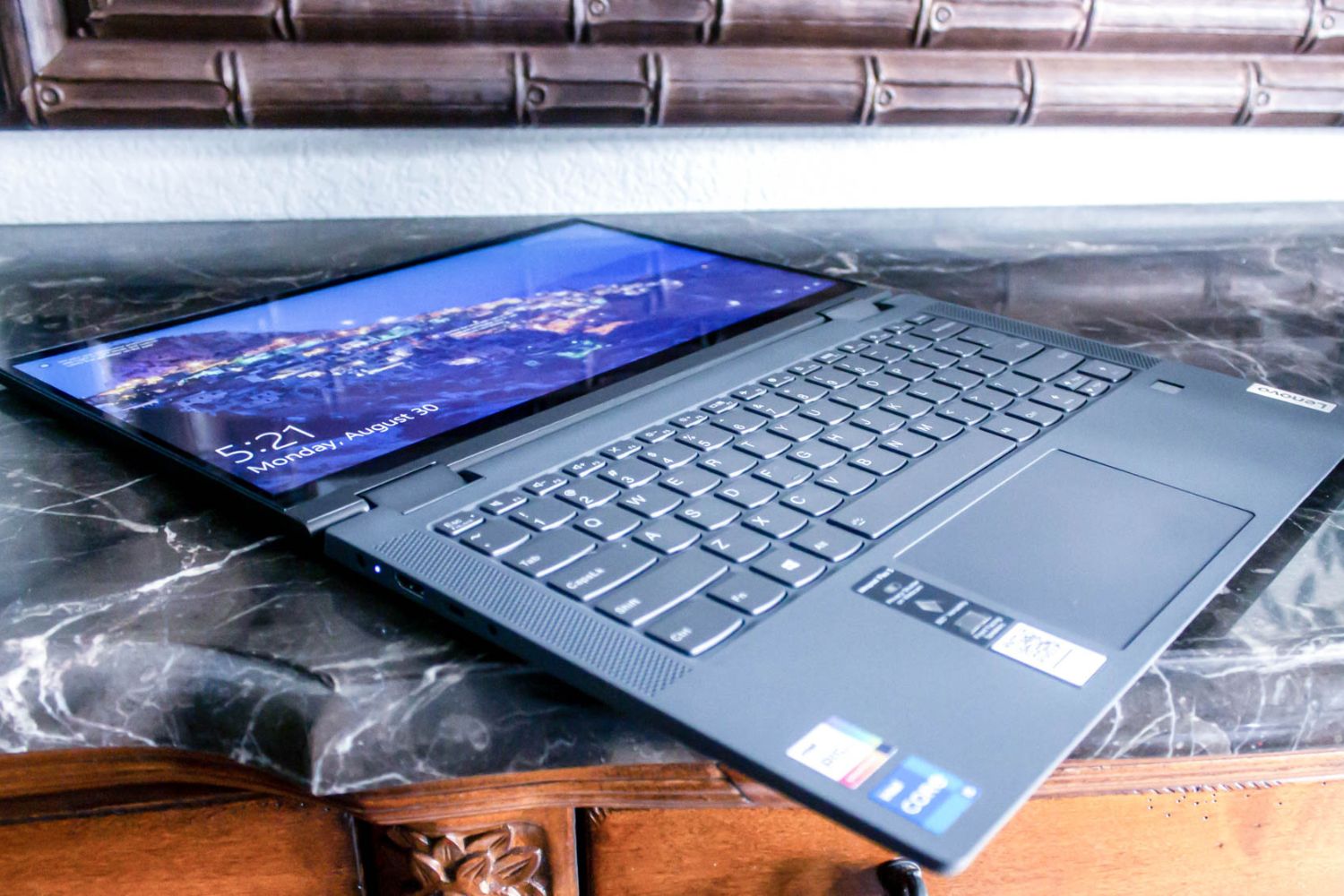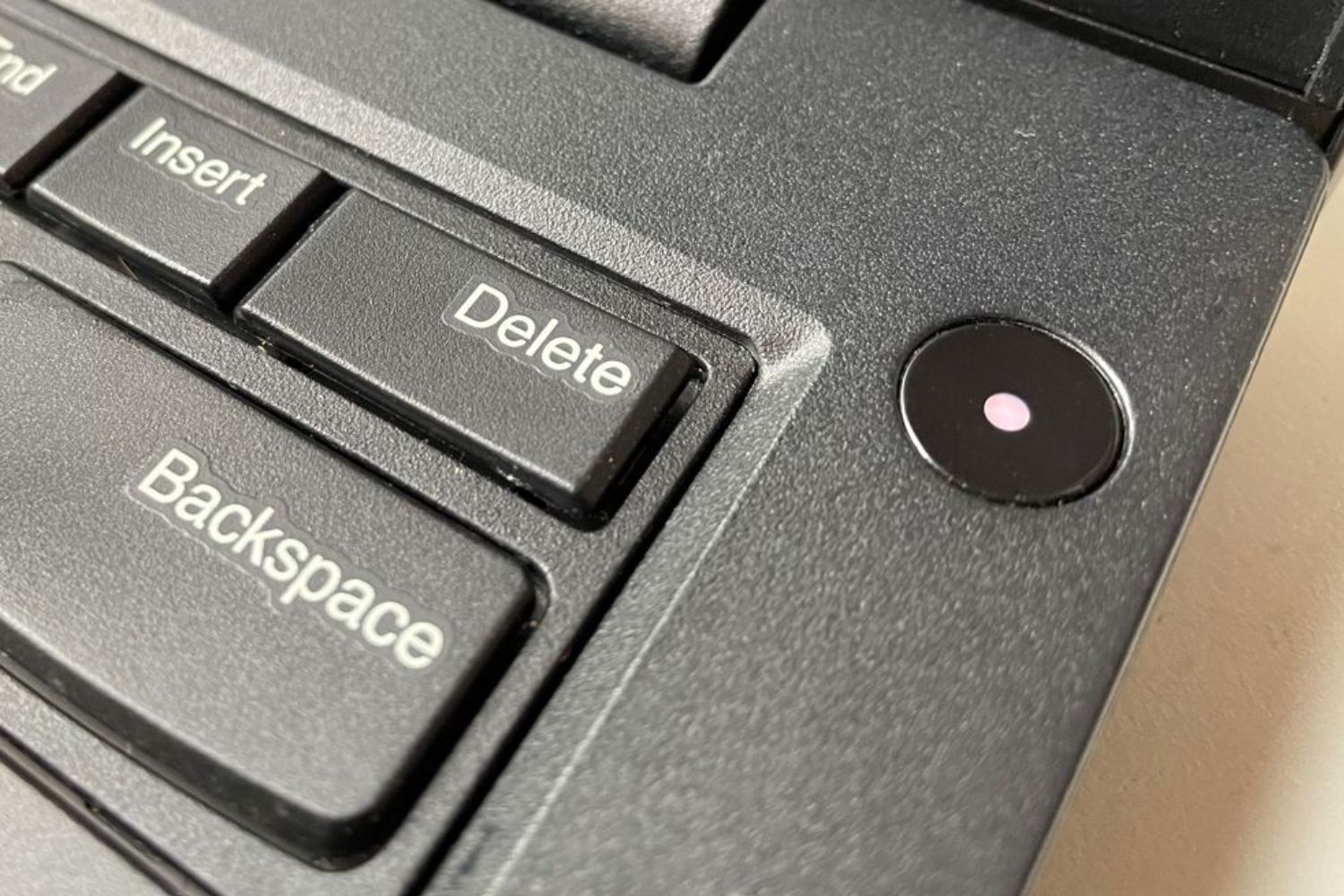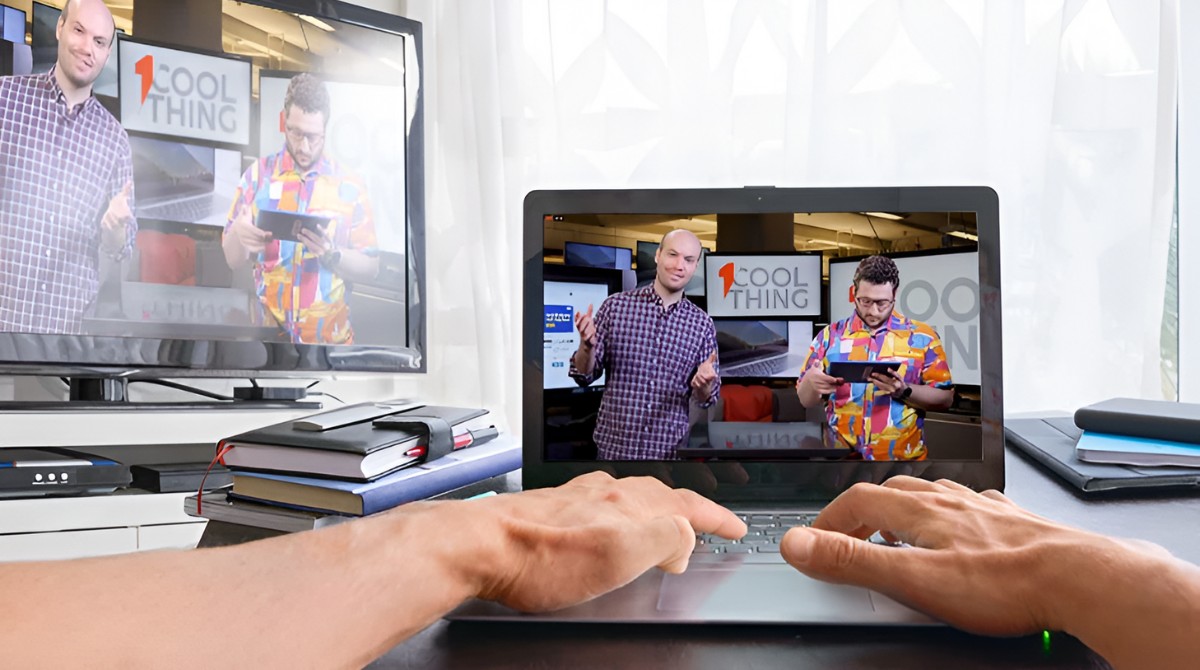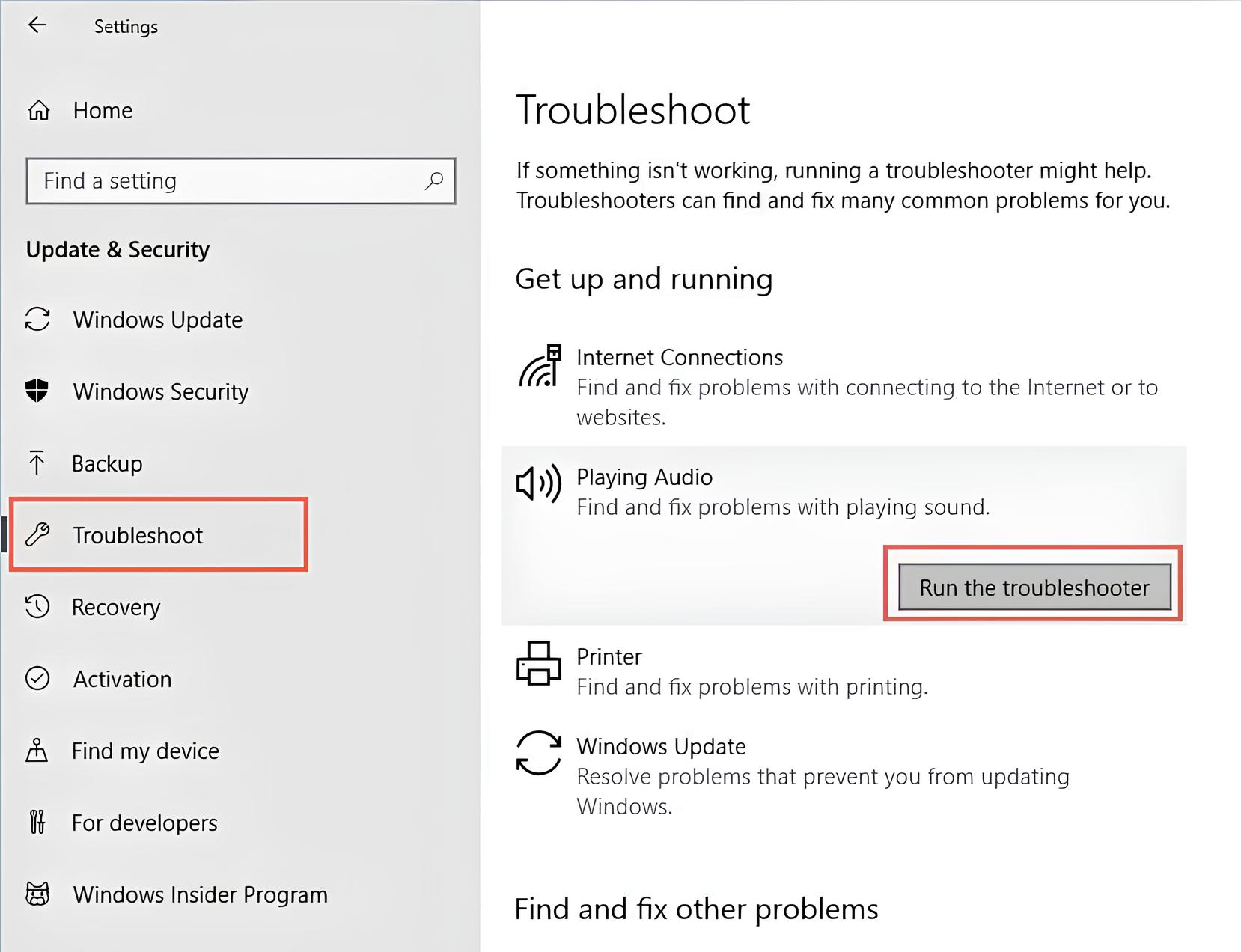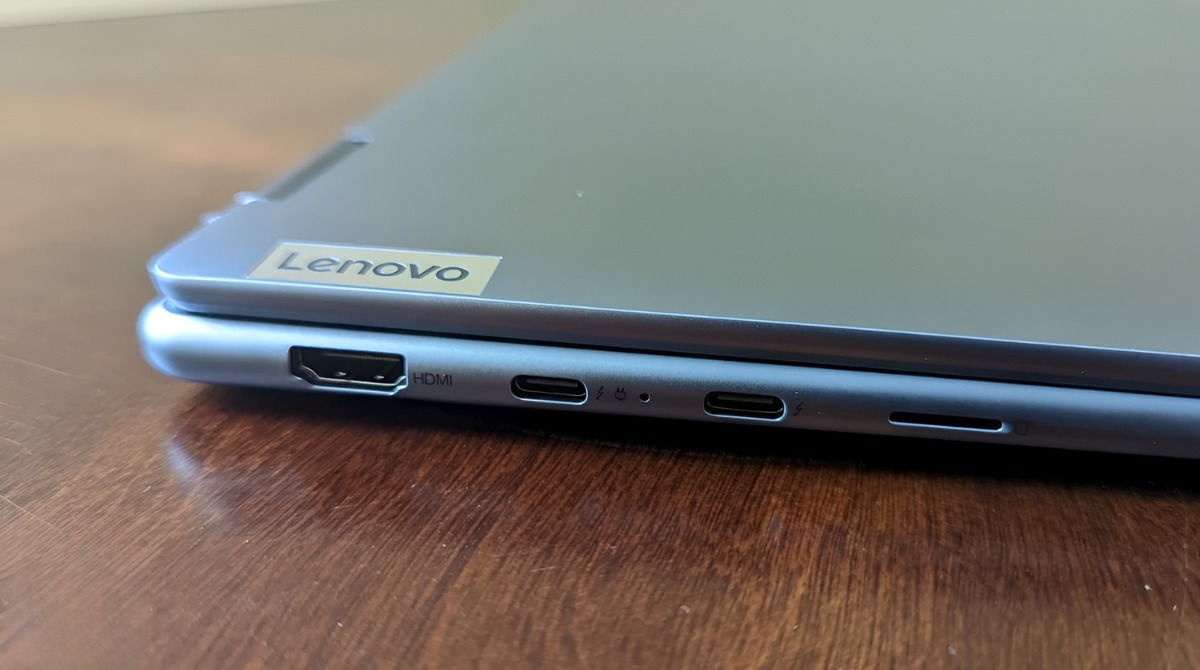Introduction
Lenovo Ultrabooks are highly popular among tech-savvy enthusiasts and professionals alike. These sleek and powerful laptops offer a wide range of features and functionalities that make them ideal for both work and play. To ensure a seamless user experience, Lenovo has implemented a robust system of alerts that notify users about various conditions and potential issues. These alerts serve as a proactive measure to address any concerns and help users maximize the performance and longevity of their Lenovo Ultrabook.
Understanding the different alerts and their significance is crucial for effectively managing and troubleshooting any potential problems. In this article, we will delve into the most common alerts found on Lenovo Ultrabooks. From power alerts to software notifications, we will explore each type in detail, providing valuable insights on how to interpret and respond to them.
Whether you’re a seasoned Lenovo Ultrabook user or considering investing in one, being familiar with these alerts will help you stay informed and take appropriate actions to maintain the optimal functioning of your device. So let’s dive into the world of Lenovo Ultrabook alerts and discover how they can enhance your user experience and keep your laptop running smoothly.
Power Alert
Power alerts on Lenovo Ultrabooks are designed to notify users about any issues related to the device’s power source. These alerts can indicate low battery levels, AC power malfunctions, or issues with the power adapter. When a power alert is triggered, it is essential to take prompt action to ensure uninterrupted usage and prevent any potential damage to the device.
One common power alert is the “Low Battery” notification. When this alert appears, it indicates that the battery charge is critically low, and the device will soon shut down if not connected to a power source. To address this alert, connect your Lenovo Ultrabook to a power outlet or use the provided power adapter to charge the battery.
Another power alert that users may encounter is the “AC Power Issue” notification. This alert appears when there are problems with the AC power supply or connection. It could indicate a faulty power adapter, a loose power cord, or a problem with the power outlet. If you receive this alert, try unplugging and reconnecting the power cord, ensuring it is securely connected to both the Lenovo Ultrabook and the power outlet. If the issue persists, consider using a different power adapter or contacting Lenovo’s technical support for further assistance.
It is also important to pay attention to the “Power Adapter Issue” alert. This alert is triggered when there is a problem with the power adapter itself. It could indicate a damaged or malfunctioning adapter that needs to be replaced. If you receive this alert, try using a different power adapter if available. If the alert persists, it is recommended to contact Lenovo support to obtain a replacement adapter or seek professional assistance.
Responding promptly to power alerts is essential to ensure uninterrupted usage and maintain the health of your Lenovo Ultrabook’s battery. By addressing power-related issues quickly, you can avoid unexpected shutdowns, data loss, and other complications that may arise from power-related problems.
Battery Alert
Battery alerts on Lenovo Ultrabooks are designed to inform users about the status and health of their device’s battery. These alerts are crucial for managing battery usage, maximizing performance, and extending battery life. Understanding and responding to battery alerts can help users optimize their Lenovo Ultrabook’s battery performance and prevent unexpected power outages.
One common battery alert is the “Low Battery Level” notification. This alert indicates that the battery charge has reached a critically low level and the device will soon shut down if not connected to a power source. When you receive this alert, it is crucial to save your work and connect your Lenovo Ultrabook to a power outlet or use the provided power adapter to charge the battery.
Another important battery alert is the “Battery Health” notification. This alert provides information about the overall health and condition of the battery. It may display battery wear level, charge capacity, or other relevant battery parameters. Monitoring battery health alerts can help identify any deterioration in battery performance or the need for battery replacement. If you receive a battery health alert indicating a significant decrease in charge capacity or excessive wear, it is advisable to contact Lenovo support for guidance or consider replacing the battery if necessary.
In addition to low battery and battery health alerts, Lenovo Ultrabooks may also display notifications related to battery conservation and power management. These alerts inform users about power-saving features and offer suggestions on how to optimize battery usage. For example, you may receive alerts recommending reducing screen brightness, disabling unused wireless connections, or closing unnecessary applications to extend battery life. Following these recommendations can help you make the most of your Lenovo Ultrabook’s battery and ensure efficient power management.
Being attentive to battery alerts and taking appropriate actions can greatly enhance your Lenovo Ultrabook experience. Regularly monitoring battery health, managing power consumption, and responding promptly to low battery alerts can help you avoid unexpected shutdowns and prolong your device’s battery life.
Overheating Alert
Overheating alerts on Lenovo Ultrabooks are designed to warn users about a rise in the internal temperature of the device. Overheating can occur due to intensive usage, inadequate ventilation, or hardware malfunctions. These alerts are crucial for preventing potential damage to the device and ensuring optimal performance.
When an overheating alert is triggered, it is important to take immediate action to cool down the Lenovo Ultrabook and prevent any potential harm. The alert may be displayed as a pop-up notification or as a warning indicator on the device itself. Upon receiving the alert, here are some steps to address the issue:
- Check for blocked air vents: Ensure that the air vents on your Lenovo Ultrabook are not obstructed by any objects or debris. Blocked air vents can prevent proper airflow, leading to increased heat buildup.
- Place on a cool, flat surface: Move your Lenovo Ultrabook to a cool and stable surface. Avoid using it on soft surfaces like beds or pillows, as this can restrict airflow and contribute to overheating.
- Close unnecessary applications: Overworking the processor and GPU can generate excessive heat. Close any unnecessary applications or processes that may be running in the background and causing high system load.
- Use a cooling pad: If you consistently experience overheating issues, consider using a laptop cooling pad. These devices help dissipate heat and keep your Lenovo Ultrabook at a lower temperature during prolonged usage.
- Check for firmware updates: Lenovo periodically releases firmware updates that include performance optimizations, including thermal management. Check for updates on the Lenovo website or through the provided software utility and install any available updates.
- Consider professional assistance: If your Lenovo Ultrabook continues to overheat despite taking these precautionary measures, it may indicate a hardware issue. In such cases, it is advisable to contact Lenovo support or seek professional assistance for further diagnosis and repair.
Overheating is a common issue faced by laptop users, regardless of the brand. By promptly addressing overheating alerts and implementing preventive measures, you can protect your Lenovo Ultrabook from potential damage and ensure smooth operation even during intensive usage.
USB Port Alert
USB port alerts on Lenovo Ultrabooks are designed to inform users about potential issues related to the USB ports on their devices. USB ports are essential for connecting external devices such as flash drives, external hard drives, and peripherals like keyboards and mice. When a USB port alert is triggered, it is important to address the issue to ensure proper connectivity and functionality.
One common USB port alert is the “USB Device Not Recognized” notification. This alert indicates that the Lenovo Ultrabook is unable to recognize the USB device connected to the port. To troubleshoot this issue, try the following steps:
- Disconnect and reconnect the USB device: Sometimes, a loose connection can cause the alert. Unplug the USB device from the port and then reinsert it firmly. If the alert persists, try connecting the device to a different USB port to determine if the problem lies with the specific port.
- Check for driver issues: Outdated or incompatible USB drivers can prevent proper communication between the device and the Lenovo Ultrabook. Update the USB drivers to the latest version from the Lenovo website or through the provided software utility.
- Verify the USB device compatibility: Some USB devices may have compatibility issues with specific ports or operating systems. Ensure that the USB device is compatible with the Lenovo Ultrabook and check for any specific driver requirements or software updates for the device.
- Inspect for physical damage: Examine the USB port and device for any signs of physical damage. Bent or broken pins, as well as damage to the USB port itself, can cause connectivity issues. If you notice any damage, it is advisable to contact Lenovo support for assistance.
- Restart the Ultrabook: Sometimes, a simple restart can resolve temporary USB port issues. Restart your Lenovo Ultrabook and check if the USB device is recognized after the restart.
If you have tried all the troubleshooting steps and the USB port alert persists, it may indicate a hardware issue with the port. In such cases, it is recommended to contact Lenovo support or seek professional assistance for further diagnosis and repair.
Being aware of USB port alerts and taking appropriate actions can help ensure seamless connectivity and functionality when using external devices with your Lenovo Ultrabook. By addressing USB port issues promptly, you can avoid data transfer problems and maintain efficient usage of your laptop’s USB ports.
Network Alert
Network alerts on Lenovo Ultrabooks are designed to notify users about issues related to network connectivity. These alerts can indicate problems with wireless connections, network adapters, or the overall network configuration. When a network alert is triggered, it is important to address the issue to maintain seamless internet connectivity and access to network resources.
One common network alert is the “Limited Connectivity” notification. This alert appears when the Lenovo Ultrabook is connected to a network, but it has limited or no internet access. To troubleshoot this issue, you can try the following steps:
- Restart the device: Sometimes, a simple restart can resolve temporary network issues. Restart your Lenovo Ultrabook and check if the internet connectivity is restored after the restart.
- Check network settings: Ensure that your network settings are configured correctly. Check if the Wi-Fi is enabled, and verify the network name and password are entered correctly. Additionally, check if any specific proxy settings or VPN configurations are interfering with the network connection.
- Reset the router: If you are experiencing network issues on multiple devices, it may be an issue with the router. Try resetting the router by turning it off, waiting for a few seconds, and then turning it back on. This can resolve any temporary router glitches that might be affecting connectivity.
- Update network drivers: Outdated or incompatible network drivers can cause connectivity problems. Update the network drivers to the latest version from the Lenovo website or through the provided software utility.
- Scan for malware: Malware or viruses can disrupt network connectivity. Run a thorough scan using a reliable antivirus software to detect and remove any potential threats.
- Contact your internet service provider (ISP): If none of the above steps resolve the issue and you are unable to connect to the network, contact your ISP for further assistance. They can help diagnose any network-related problems and guide you through the troubleshooting process.
If you are connecting to a wired network and encountering network alerts, ensure that the Ethernet cable is securely connected to both the Lenovo Ultrabook and the network port. Also, check for any physical damage to the cable or port that may be causing connectivity problems.
By promptly addressing network alerts and following the necessary troubleshooting steps, you can restore network connectivity on your Lenovo Ultrabook and enjoy uninterrupted internet access and network resources.
Hardware Alert
Hardware alerts on Lenovo Ultrabooks are designed to notify users about potential issues related to the physical components of their devices. These alerts can indicate problems with the processor, memory, storage, or other hardware components. When a hardware alert is triggered, it is important to address the issue promptly to ensure optimal performance and prevent further damage to the device.
One common hardware alert is the “System Fan Error” notification. This alert indicates that there is a problem with the cooling fan in your Lenovo Ultrabook. The cooling fan plays a crucial role in maintaining a safe operating temperature for the device. When this alert appears, it is important to check the fan for any obstructions or damage. Clear any dust or debris from the fan or consider seeking professional assistance to resolve the issue if the fan is faulty or damaged.
Another hardware alert you may encounter is the “Memory Error” notification. This alert suggests an issue with the device’s memory module. Incorrectly inserted or faulty memory modules can cause system instability and performance problems. To address this alert, try reseating the memory modules by carefully removing and reinserting them into their respective slots. If the alert persists, it may indicate a faulty memory module that needs to be replaced.
It is also important to pay attention to alerts related to storage devices. A “Disk Error” notification, for example, indicates a problem with the hard drive or solid-state drive (SSD). This could be due to a physical failure or a corrupt file system. In such cases, it is advisable to back up your data immediately and contact Lenovo support for further guidance on repairing or replacing the storage device.
Additionally, be aware of alerts related to other hardware components, such as the processor or graphics card. These alerts may indicate issues like overheating, inadequate power supply, or hardware failure. It is crucial to take appropriate action to address these alerts, such as ensuring proper cooling, checking power connections, or seeking professional assistance if necessary.
When encountering hardware alerts on your Lenovo Ultrabook, it is recommended to refer to the user manual or contact Lenovo support for specific troubleshooting steps related to your device model. Timely attention to hardware alerts can help you identify and resolve potential hardware issues, ensuring the longevity and smooth functioning of your Lenovo Ultrabook.
Software Alert
Software alerts on Lenovo Ultrabooks are designed to inform users about potential issues related to the operating system or installed software. These alerts can indicate software errors, compatibility problems, or the need for updates. When a software alert is triggered, it is important to address the issue to maintain system stability and functionality.
One common software alert is the “Driver Error” notification. This alert indicates a problem with one or more device drivers installed on your Lenovo Ultrabook. Outdated, incompatible, or corrupt drivers can cause various issues, including device malfunctions or system crashes. To address this alert, you can try the following steps:
- Update drivers: Ensure that all drivers are up to date. Visit the Lenovo website or use the provided software utility to check for driver updates and install them accordingly.
- Roll back drivers: If you recently updated a driver and started experiencing issues, you can try rolling back to the previous version to see if it resolves the problem.
- Reinstall drivers: In some cases, reinstalling a driver can resolve software conflicts or issues. Uninstall the problematic driver from the Device Manager and then reinstall it by following the instructions provided by Lenovo or the driver manufacturer.
- Check for software updates: Software alerts may also notify you about available software updates. These updates can include bug fixes, performance improvements, or new features. Regularly check for and install software updates to keep your Lenovo Ultrabook running smoothly.
- Run system diagnostics: Some Lenovo models come with built-in system diagnostics tools. These tools can help identify and resolve common software-related issues. Run a comprehensive system scan using the provided utility and follow the suggested troubleshooting steps.
- Scan for malware: Malware or viruses can cause software errors and other issues. Run a thorough scan using reliable antivirus software to detect and remove any potential threats.
It is important to note that software alerts can also be triggered by errors in specific applications or the operating system itself. In such cases, follow any instructions provided by the alert or consult the respective software’s documentation or support resources for troubleshooting steps.
By promptly addressing software alerts and keeping your Lenovo Ultrabook’s software up to date, you can ensure a stable and secure computing environment. Regular maintenance and software management will help you maximize performance and minimize issues related to software compatibility or errors.
Security Alert
Security alerts on Lenovo Ultrabooks are designed to notify users about potential security threats or vulnerabilities. These alerts are crucial for maintaining the integrity and privacy of your data and protecting your Lenovo Ultrabook from malware, viruses, and unauthorized access. When a security alert is triggered, it is important to take immediate action to safeguard your device and personal information.
One common security alert is the “Virus Detected” notification. This alert indicates that your Lenovo Ultrabook has detected a potential virus or malware on your system. To address this alert, you should:
- Run a full system scan: Use reputable antivirus software to perform a thorough scan of your device. Follow the instructions of the antivirus software to quarantine or remove any detected threats.
- Update antivirus software: Ensure that your antivirus software is up to date. Regularly check for updates and install the latest virus definitions to effectively detect and protect against new threats.
- Scan for malware: In addition to traditional antivirus software, consider using dedicated anti-malware tools to detect and remove any potential malware that might have evaded detection.
- Be cautious of suspicious emails or downloads: Exercise caution when opening email attachments, downloading files from untrusted sources, or clicking on suspicious links. These can be common sources of malware and security breaches.
- Enable firewall and real-time protection: Ensure that the built-in firewall on your Lenovo Ultrabook is enabled, and enable real-time protection in your antivirus software. These measures can provide an added layer of security by blocking malicious network traffic and monitoring system activities.
- Regularly back up your data: Create secure backups of your important files and documents. In the event of a security incident, having backups ensures that you can recover your data without having to pay a ransom or lose valuable information.
In addition to virus-related alerts, you may also encounter security alerts related to potential phishing attempts or suspicious network connections. These alerts serve as warning signs and prompt you to exercise caution when sharing sensitive information or accessing unfamiliar websites or networks.
Staying vigilant and taking appropriate security measures is essential to protect your Lenovo Ultrabook and personal data. By proactively addressing security alerts and following best practices, you can enhance the security of your device and minimize potential risks.
Conclusion
In conclusion, Lenovo Ultrabooks are equipped with a comprehensive system of alerts that notify users about various conditions and potential issues. These alerts play a crucial role in maintaining the performance, functionality, and security of your device. From power and battery alerts to network, hardware, software, and security alerts, being familiar with these alerts allows users to address potential problems promptly and effectively.
Power alerts help users manage battery levels and address power-related issues, ensuring uninterrupted usage. Battery alerts provide valuable insights into battery health and help optimize battery performance. Overheating alerts serve as a proactive measure to prevent damage caused by excessive heat buildup. USB port alerts help troubleshoot connectivity issues with external devices. Network alerts ensure seamless internet connectivity and access to network resources. Hardware alerts notify users about potential issues with physical components, allowing for timely repairs or replacements. Software alerts help maintain system stability and protect against security threats. Security alerts safeguard personal information and protect against malware and unauthorized access.
By responding promptly to these alerts and following the necessary troubleshooting steps, users can maximize the performance, longevity, and security of their Lenovo Ultrabooks. Regularly updating drivers and software, performing system scans, and implementing security measures contribute to a smooth user experience and safeguard your valuable data.
In conclusion, being aware of and addressing alerts on your Lenovo Ultrabook ensures a reliable and enjoyable computing experience. Stay proactive, stay informed, and utilize the alerts to get the most out of your Lenovo Ultrabook’s capabilities.







